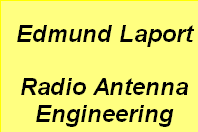

Antentop is FREE e-magazine devoted to Antennas and Amateur Radio an
Special page devoted to
Plasma Antenna Technology

Custom Search
|
ANTENTOP-
03- 2003, # 004 |
Plasma Antenna Technology
|
|
|
|
|
1. Higher power - Increased
power can be achieved in the plasma antenna than in the corresponding
metal antenna because of lower Ohmic losses. Plasmas have a much
wider range of power capability than metals as evident from low
powered plasma in fluorescent bulbs to extremely high-powered
plasmas in the Princeton University experimental fusion reactors.
In this range, a high-powered plasma antenna is still low powered
plasma. Since plasmas do not melt, the plasma antennas can provide
heat and fire resistance. The higher achievable power and directivity
of the plasma antenna can enhance target discrimination and track
ballistic missiles at the S and X band. |
plasma
density and can be maintained during reconfiguration. Estimates
indicate a 20db improvement in antenna efficiency. 5. Reconfiguration and mutifunctionality
- The plasma antenna can be reconfigured on the fly by controlled
variation of the plasma density in space and time with far more
versatility than any arrangement of metal antennas. This reduces
the number of required elements reducing size and weight of shipboard
antennas. One option is to construct controlled density plasma
blankets around plasma antennas thereby creating windows (low-density
sections of the blanket) for main lobe transmission or reception
and closing windows (high-density regions in the plasma blanket).
The plasma windowing effect enhances directivity and gain in a
single plasma antenna element so that an array will have less
elements than a corresponding metal antenna array. Closing plasma
windows where back lobes and side lobes exist eliminates them
and reduces jamming and clutter. This sidelobe reduction below
40db enhances directivity and discrimination. In addition, by
changing plasma densities, a single antenna can operate at one
bandwidth (e.g. communication) while suppressing another bandwidth
(e.g. radar). |
|
ASI
specializes in the development of advanced patented plasma technologies
in support of DOD and commercial organizations. ASI staff has
extensive experience in the disciplines of science, physics, engineering
and mathematics with a focus on advanced plasma physics. ASI has
innovated and |
patented new applications of
plasma in the areas of antennas, communication links, electronic
shielding and noise reduction. The Company has worked on plasma
projects with General Dynamics, University of Tennessee, the U.S.
Missile Defense Agency, the U.S. Navy and Malibu Research, Inc. |
|
ASI Technology Corporation http://www.asiplasma.com/ |
The Technology of the Future |
|
|
|
|
|
|
|
|
|
|
Page 29 |
|
 |
 |
 |
 |
Just for Fun:

Powered byIP2Location.com
Thanks for your time!
Last Updated:
February 8, 2018 22:58





